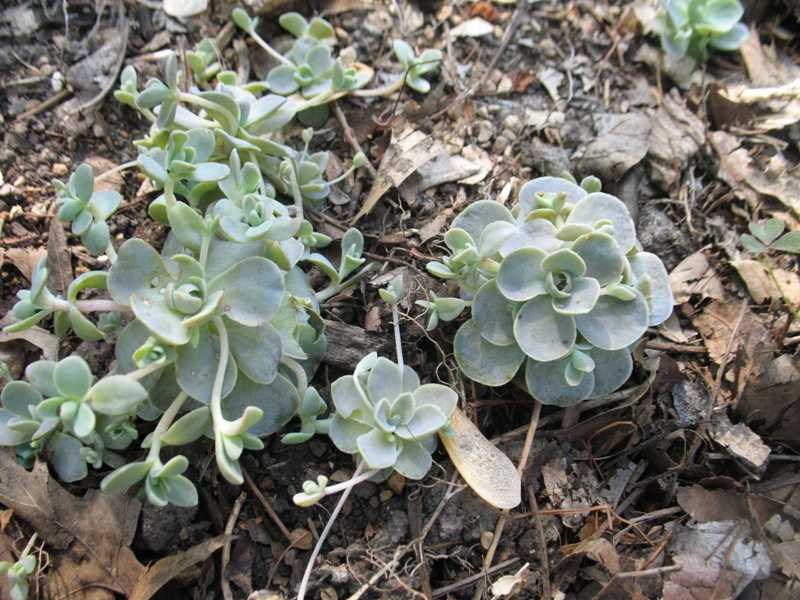Duncecap (Orostachys boehmeri)
Duncecap
Orostachys boehmeri, commonly known as duncecap, is a succulent from the stonecrop family that is native to Japan. It typically forms a sempervivum-like basal rosette of thick fleshy oblong lavender gray leaves (to 1″ long by 1/2″ wide). Each basal rosette typically matures to 4″ tall but spreads outward to 12″ wide by offset plantlets which radiate from the leaf axils of the main rosette by thin, stolon-like branchlets. Tiny yellow flowers appear in spikes rising from the rosette to 6″ tall. A rosette usually flowers in the second or third year. Each spike is cone-shaped and resembles a dunce’s cap, hence the common name. The flowering rosette dies after producing flowers but the younger offsets that have yet to produce flowers remain. Rosettes that have not bloomed wither in fall, but grow back in spring. Fruits are small follicles which are ornamentally insignificant.
Genus name comes from the Greek oros meaning mountain and stachys meaning spike in reference to its mountain habitat and flowers in spikes.

Easily grown in dry to medium well-drained sandy soils in full sun. Tolerates light shade. Tolerates drought, but prefers somewhat consistent watering. Avoid wet soils in winter. Plantlets may be removed, rooted in a moist medium and planted in other locations.
| Hardiness zone | 6 - 10 |
| Sun light | Full sun |
| Water | Dry to medium |
| Maintenance | Low |
No serious insect or disease problems. Crown rot may occur in overly moist or poorly drained soils. Watch for aphids.
Rock garden. Small ground cover. Accent. Containers.
| Common name | Duncecap |
| Botanical name | Orostachys boehmeri |
| Plant type | Herbaceous perennial |
| Family | Crassulaceae |
| Hardiness zone | 6 - 10 |
| Water | Dry to medium |
| Maintenance | Low |
| Flower color | Yellow |
| Flowering period | September |
| Height | 0.25 to 0.50 feet |
| Width | 0.50 to 1 ft. |